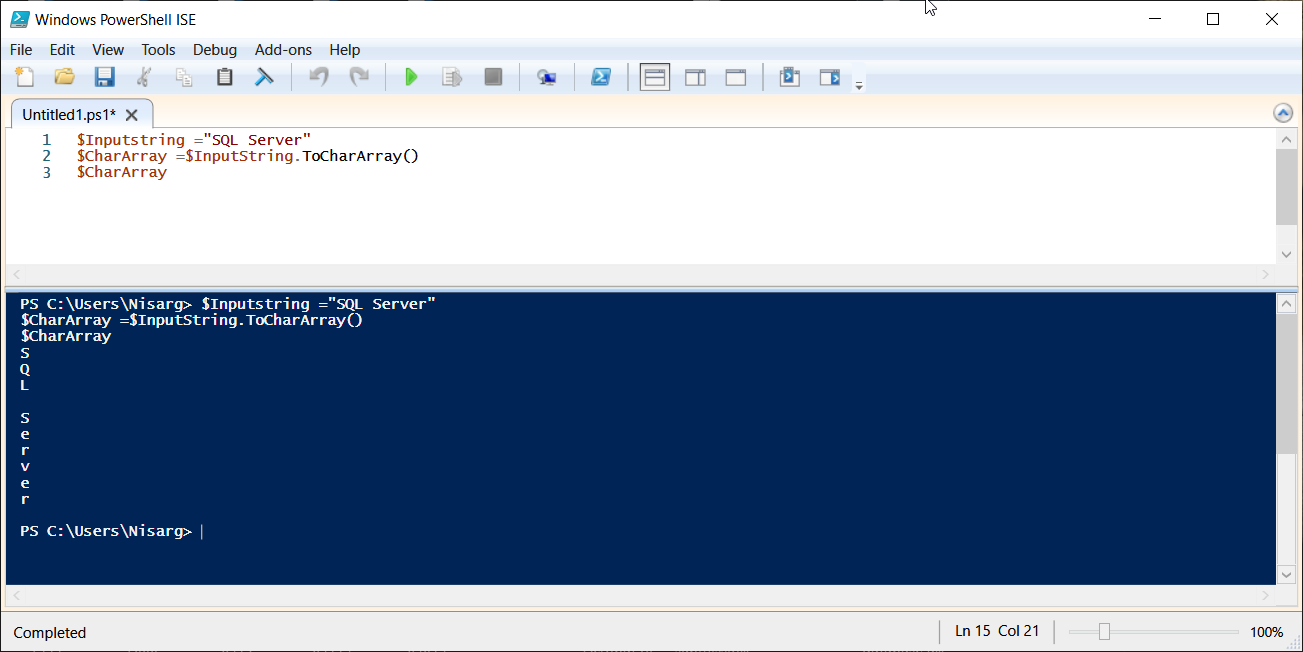

- #Powershell array vs arraylist how to#
- #Powershell array vs arraylist code#
- #Powershell array vs arraylist download#
So what other options do we have then? If you are comfortable getting your feet wet with some.
#Powershell array vs arraylist code#
Using arrays like this is by far the simplest and easiest (and most readable) way of using arrays (or collections) in PowerShell, and my recommendation is that you use this method unless you start to feel the extra overhead and need to optimize your code for speed. Normally you would never notice this, but if you are working with very large arrays, you might notice the overhead quite a bit.ītw., if you think I’m joking about arrays being of fixed size, try the following:ĭoes this mean that you should stop using arrays in PowerShell? Not at all. All this adds a little bit of overhead to the execution of the process of adding items to the array. What PowerShell does every time you think you are just adding stuff to an already existing array, is that it’s creating a brand new array, with a new size, copying over all the data (including the new data you want added) and destroying the “old” array. This means you can do the following:īut didn’t I just increase the size of the array on the fly here? No, not really. PowerShell, being the helpful interpreter it is, kind of smooths things over when dealing with arrays. This means that when you instantiate it, you can’t change the size of it! “But wait a minute!” I hear you say… I know.

One interesting thing to note about the System.Array class is that it has a fixed capacity. To see that this is the case, check the resulting type with the GetType method, like so: $myArray = you are really doing is creating an instance of the System.Array class. When you declare an array in PowerShell, like this: So let’s start by talking about the array, then I will go through some other useful collections that you might not have known about. Next after strings (also an array btw.), arrays are one of the first concepts you are likely to encounter when learning PowerShell. You need to store a collection of data of some sort, so you stuff it in an array, problem solved, right? But is an array the best solution for your script? And should you care?
#Powershell array vs arraylist how to#
#Powershell array vs arraylist download#
Download NuGet packages from PowerShell.$a.GetType() | Select-Object Name # returns ArrayList $a.ForEach(, 'Split') # splits in even and odd ,$a | Get-Member # get all methods and properties available for array manupulation You can also store the output of a cmdlet to an array. PowerShell also supports the use of sub-expression operator to create an array. Range operators can also be used to initialize an array. In PowerShell, you can create and initialize an array by assigning multiple values separated by a comma to a variable.

Array And Hash Tables In PowerShell: Create An Array In PowerShell: An array can contain a collection of different data types. PowerShell also supports the use of the multi-dimensional array. The simplest type of data structure is a linear array, also called a one-dimensional array. An array is stored such that the position of each element can be computed from its index tuple. An array is a data structure consisting of a collection of elements (values or variables), each identified by at least one array index or key. Like any other scripting language, PowerShell also supports array. In this blog post, we will discuss Array and Hash Tables in PowerShell. In the last blog post, we have discussed break, continue, and exit statements in PowerShell. Welcome to CloudAffaire and this is Debjeet.


 0 kommentar(er)
0 kommentar(er)
